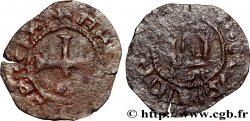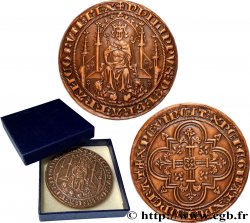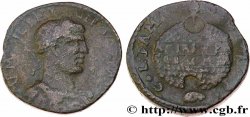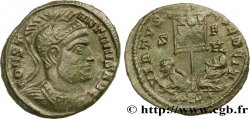Live auction - bry_914415 - PHILIP VI OF VALOIS Écu d'or à la chaise n.d.
You must signin and be an approved bidder to bid, LOGIN TO BID. Accounts are subject to approval and the approval process takes place within 48 hours. Do not wait until the day a sale closes to register. Clicking on "BID" constitutes acceptance of the terms of use of cgb.fr private live auctions.
Bids must be placed in whole Euro amounts only. The sale will start closing at the time stated on the item description; any bids received at the site after the closing time will not be executed. Transmission times may vary and bids could be rejected if you wait until the last second. For further information check the Live auction FAQ
All winning bids are subject to a 18% buyer’s fee.
All winning bids are subject to a 18% buyer’s fee.
| Estimate : | 1 800 € |
| Price : | 1 750 € |
| Maximum bid : | 1 880 € |
| End of the sale : | 24 September 2024 16:17:16 |
| bidders : | 3 bidders |
Type : Écu d'or à la chaise
Date: 01/01/1337
Date: n.d.
Metal : gold
Millesimal fineness : 1000 ‰
Diameter : 28 mm
Orientation dies : 3 h.
Weight : 4,50 g.
Rarity : R1
Coments on the condition:
Cet écu est frappé sur un flan très légèrement voilé. Reliefs nets avec une petite faiblesse de frappe à 3 heures au droit
Catalogue references :
Obverse
Obverse legend : + PHILIPPVSX DEIX - XGRAX - FRANCORVMX REX, (PONCTUATION PAR DEUX SAUTOIRS SUPERPOSÉS, PAR SIMPLE SAUTOIR AUTOUR DE GRA).
Obverse description : Philippe VI assis dans une stalle gothique, couronné, vêtu du haubert et de la cotte d'armes, tenant de la main droite l'épée levée et de la gauche l'écu de France aux lis sans nombre, dans un polylobe cantonné de petits trèfles.
Obverse translation : (Philippe, roi des Francs par la grâce de Dieu).
Reverse
Reverse legend : +° XPC: VINCIT: XPC: REGNAT: XPC: INPERAT, (N DE REGNAT RÉTROGRADE, PONCTUATION PAR DEUX ANNELETS SUPERPOSÉS, SIMPLE ANNELET EN DÉBUT DE LÉGENDE).
Reverse description : Croix quadrilobée et fleuronnée, dans un quadrilobe orné de feuilles et cantonné de quatre trèfles sans queue.
Reverse translation : (Le Christ vainc, le Christ règne, le Christ commande).








 Report a mistake
Report a mistake Print the page
Print the page Share my selection
Share my selection Ask a question
Ask a question Consign / sell
Consign / sell
 Full data
Full data












